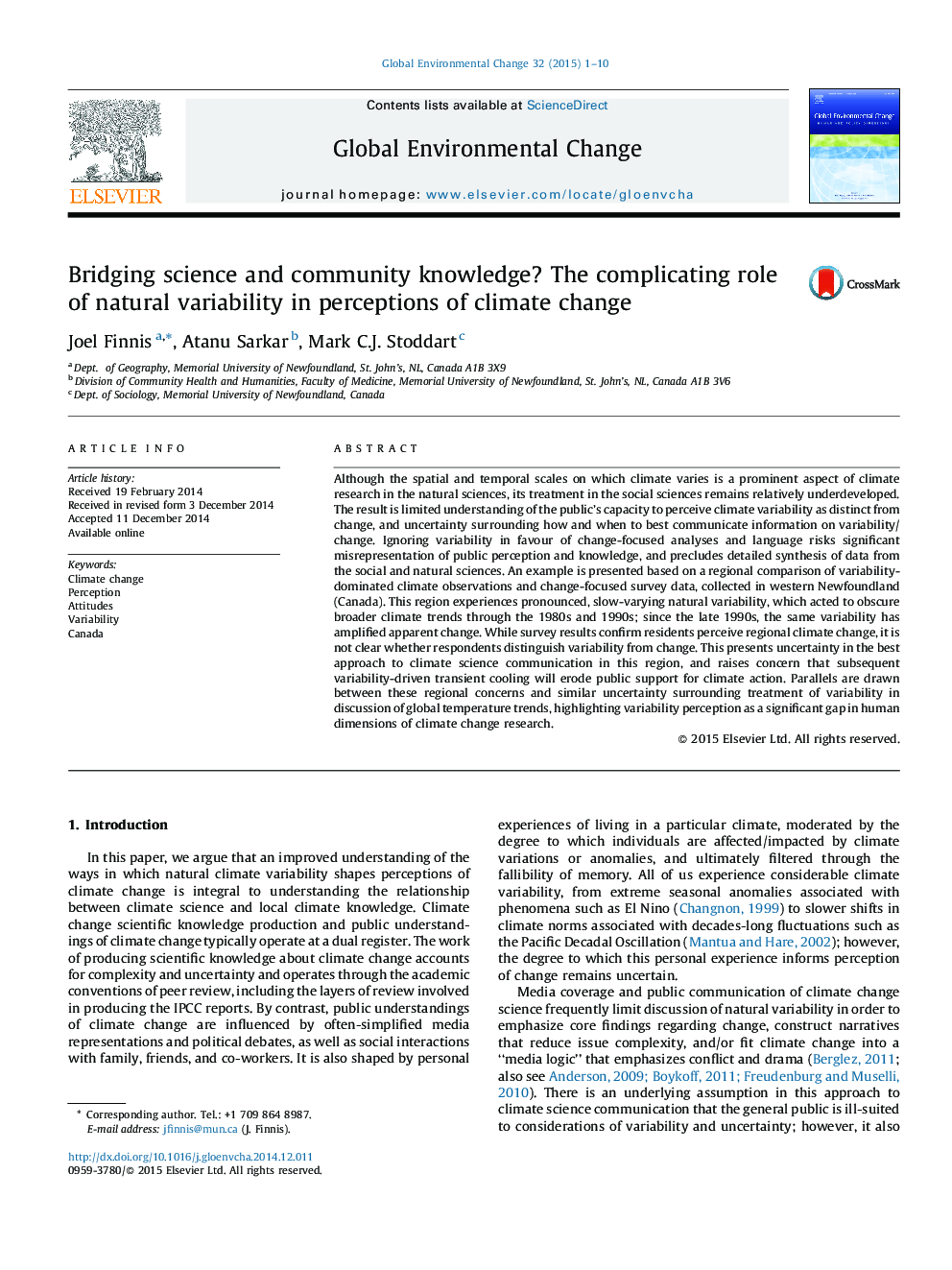| Article ID | Journal | Published Year | Pages | File Type |
|---|---|---|---|---|
| 7469953 | Global Environmental Change | 2015 | 10 Pages |
Abstract
Although the spatial and temporal scales on which climate varies is a prominent aspect of climate research in the natural sciences, its treatment in the social sciences remains relatively underdeveloped. The result is limited understanding of the public's capacity to perceive climate variability as distinct from change, and uncertainty surrounding how and when to best communicate information on variability/change. Ignoring variability in favour of change-focused analyses and language risks significant misrepresentation of public perception and knowledge, and precludes detailed synthesis of data from the social and natural sciences. An example is presented based on a regional comparison of variability-dominated climate observations and change-focused survey data, collected in western Newfoundland (Canada). This region experiences pronounced, slow-varying natural variability, which acted to obscure broader climate trends through the 1980s and 1990s; since the late 1990s, the same variability has amplified apparent change. While survey results confirm residents perceive regional climate change, it is not clear whether respondents distinguish variability from change. This presents uncertainty in the best approach to climate science communication in this region, and raises concern that subsequent variability-driven transient cooling will erode public support for climate action. Parallels are drawn between these regional concerns and similar uncertainty surrounding treatment of variability in discussion of global temperature trends, highlighting variability perception as a significant gap in human dimensions of climate change research.
Related Topics
Life Sciences
Environmental Science
Environmental Science (General)
Authors
Joel Finnis, Atanu Sarkar, Mark C.J. Stoddart,
